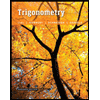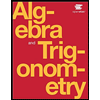Polar coordinates can be used to determine the sensitivity of sound picked up by microphones. The curve of a polar equation can be used to determine what direction the sounds will be heard and spoken into a microphone. The sound pickup pattern of the microphone below (called a cardioid microphone) is modeled by the polar equation r = 3 + 3 cos (0), where Irimeasures how sensitive the microphone is to sounds coming from angle 0. Complete the table to identify specific coordinates (r, 0) and sketch the graph of the model. You may round values of r to the nearest tenth. CE SETE SIL AT Oo.. Undo Clear All 0 0 2m r
Polar coordinates can be used to determine the sensitivity of sound picked up by microphones. The curve of a polar equation can be used to determine what direction the sounds will be heard and spoken into a microphone. The sound pickup pattern of the microphone below (called a cardioid microphone) is modeled by the polar equation r = 3 + 3 cos (0), where Irimeasures how sensitive the microphone is to sounds coming from angle 0. Complete the table to identify specific coordinates (r, 0) and sketch the graph of the model. You may round values of r to the nearest tenth. CE SETE SIL AT Oo.. Undo Clear All 0 0 2m r
Trigonometry (11th Edition)
11th Edition
ISBN:9780134217437
Author:Margaret L. Lial, John Hornsby, David I. Schneider, Callie Daniels
Publisher:Margaret L. Lial, John Hornsby, David I. Schneider, Callie Daniels
Chapter1: Trigonometric Functions
Section: Chapter Questions
Problem 1RE:
1. Give the measures of the complement and the supplement of an angle measuring 35°.
Related questions
Question

Transcribed Image Text:### Microphone Sensitivity and Polar Coordinates
Polar coordinates can be used to determine the sensitivity of sound picked up by microphones. The curve of a polar equation can be used to determine in what direction the sounds will be heard and spoken into a microphone.
The sound pickup pattern of the microphone below (called a cardioid microphone) is modeled by the polar equation \( r = 3 + 3 \cos(\theta) \), where |r| measures how sensitive the microphone is to sounds coming from angle \(\theta\). Complete the table to identify specific coordinates \((r, \theta)\) and sketch the graph of the model. You may round values of r to the nearest tenth.
#### Table for Recording Coordinates:
| Color | θ (θ) | r |
|------------|----------|-----|
| Black | 0 | |
| Red | | |
| Orange | | |
| Yellow | | |
| Green | | |
| Blue | | |
| Indigo | | |
| Violet | | |
| Pink | | |
| Gray | 2π | |
#### Graph Description:
The graph on the right represents the cardioid pattern for the microphone. The graph shows concentric circles with increasing radii, numbered 1 through 5, indicating different levels of sensitivity. The curve emanating from the center forms a characteristic heart shape, tapering at one side, which is typical of a cardioid pattern. The arrows on the axes denote the directions used to plot θ values, with θ = 0 positioned at the rightmost side (3 o'clock position) and increasing counterclockwise.
#### Instructions:
1. Use the drawing tools provided (various colored pens) to plot your coordinates on the polar graph.
2. Input the angle (θ) and the corresponding radius (r) in the table to understand how sensitivity varies with direction.
**Note**: The interface allows for undoing the changes and clearing the entire graph if necessary.
---
This detailed explanation and the table will help you graph the sensitivity pattern of the cardioid microphone and understand the directional sensitivity dependencies based on polar coordinates.
Expert Solution
This question has been solved!
Explore an expertly crafted, step-by-step solution for a thorough understanding of key concepts.
This is a popular solution!
Trending now
This is a popular solution!
Step by step
Solved in 3 steps with 3 images

Recommended textbooks for you

Trigonometry (11th Edition)
Trigonometry
ISBN:
9780134217437
Author:
Margaret L. Lial, John Hornsby, David I. Schneider, Callie Daniels
Publisher:
PEARSON

Trigonometry (MindTap Course List)
Trigonometry
ISBN:
9781305652224
Author:
Charles P. McKeague, Mark D. Turner
Publisher:
Cengage Learning


Trigonometry (11th Edition)
Trigonometry
ISBN:
9780134217437
Author:
Margaret L. Lial, John Hornsby, David I. Schneider, Callie Daniels
Publisher:
PEARSON

Trigonometry (MindTap Course List)
Trigonometry
ISBN:
9781305652224
Author:
Charles P. McKeague, Mark D. Turner
Publisher:
Cengage Learning


Trigonometry (MindTap Course List)
Trigonometry
ISBN:
9781337278461
Author:
Ron Larson
Publisher:
Cengage Learning